A data integration hub serves as a centralized platform, revolutionizing the way you manage and share data by consolidating disparate data sources into a single point for efficient exchange. This innovative architecture not only simplifies complex data landscapes but also ensures seamless communication between data producers and consumers, significantly boosting operational efficiency. FineDataLink by FanRuan exemplifies a leading solution in this space, equipped with advanced tools designed to streamline your data management processes and fully unlock your organization's data potential. As the demand for robust, real-time data synchronization solutions continues to grow, embracing such technologies is becoming essential for staying competitive in today's data-driven market.

What is a Data Integration Hub?
A data integration hub is a centralized platform that dramatically simplifies the management and sharing of data across various systems.
Definition and Core Functions of a Data Integration Hub
Functioning as a central mediation point, a data integration hub connects multiple data sources and consumers. This central point allows for the consolidation, manipulation, and orchestration of data effectively. Its core functions include:
- Data Consolidation: Aggregates data from diverse sources into a single unified platform.
- Data Transformation: Standardizes and reformats data, ensuring compatibility across different systems.
- Data Distribution: Guarantees consistent and precise delivery of data to all connected systems.
- Real-Time Synchronization: Provides the latest information, minimizing delays in data access.
These capabilities make the hub an indispensable tool for managing complex data ecosystems.
Key Components of a Data Integration Hub
The data integration hub comprises several essential components that collaborate to streamline data management:
- Central Repository: Serves as the storage hub for all integrated data, ensuring both accessibility and consistency.
- APIs and Connectors: Enable seamless communication between the hub and various data sources or applications.
- ETL/ELT Tools: Facilitate the extraction, transformation, and loading of data, streamlining the integration process.
- Orchestration Engine: Automates workflows and coordinates data flow between systems.
- Monitoring and Governance Tools: Maintain data quality, security, and compliance with organizational standards.
Together, these elements form a robust framework for efficiently handling data integration tasks.
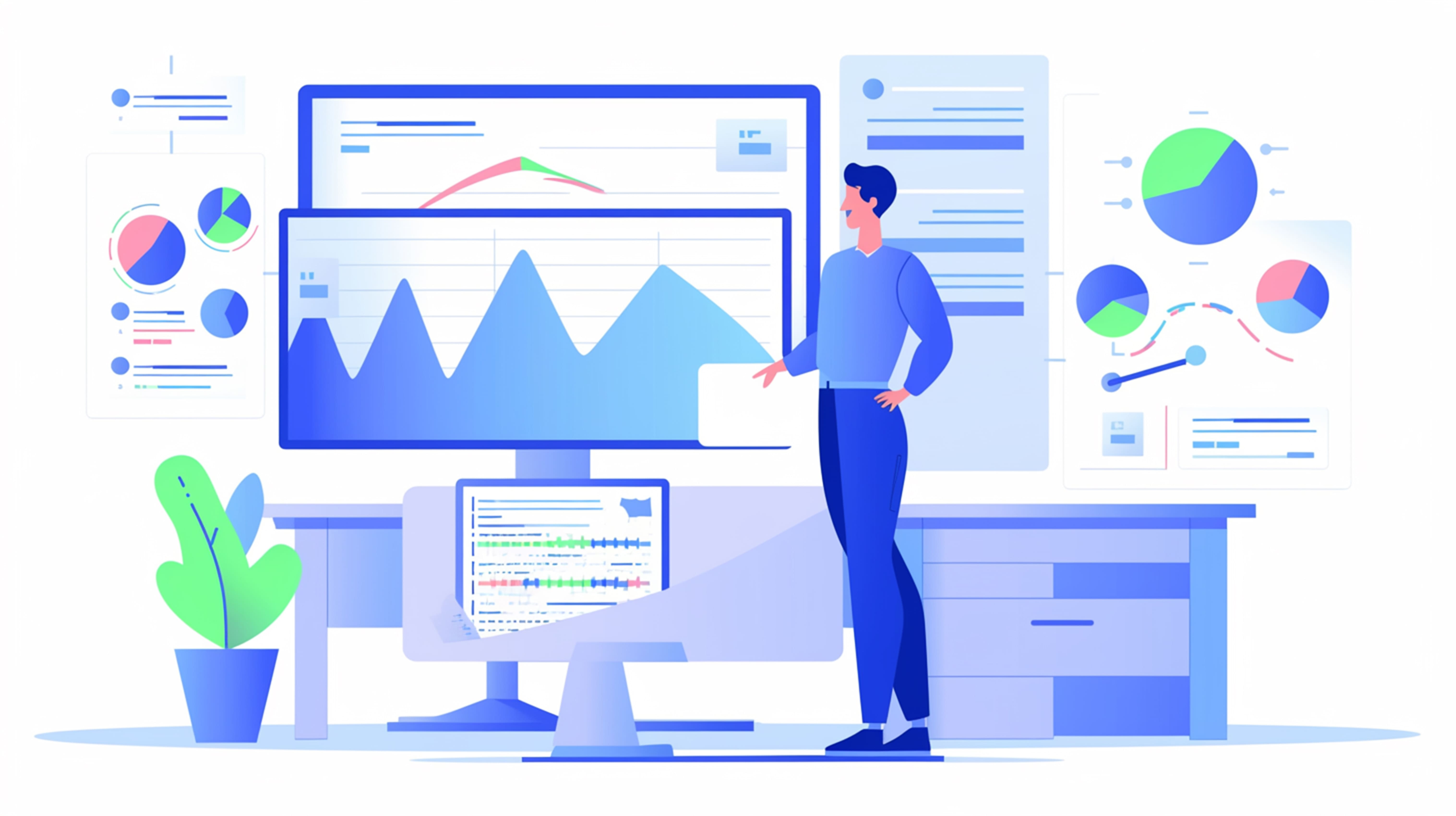
How a Data Integration Hub Differs from Traditional Integration Methods
Traditional integration methods typically rely on point-to-point connections, which can grow increasingly complex and challenging to manage as the number of systems expands. In contrast, a data integration hub simplifies these processes by centralizing them.
- Centralized Architecture: Unlike traditional methods, the hub offers a single platform for all data interactions, significantly reducing complexity.
- Scalability: The hub is designed to easily adapt to growing data needs, a challenge for traditional methods.
- Real-Time Capabilities: Where traditional methods may lag, the hub provides instant data synchronization.
- Enhanced Flexibility: By abstracting the underlying data structures, the hub simplifies integration processes, making them more straightforward.
By integrating a data integration hub into your infrastructure, you can bypass the constraints of traditional methods and fully unleash the potential of your data.
The Purpose of a Data Integration Hub
A data integration hub is essential in modern organizations, effectively addressing the challenges of managing and sharing data.
Centralizing Data Management for Better Accessibility
Rather than contending with scattered systems, a data integration hub offers a single, unified platform that meets all your data needs. This centralized approach to data management significantly enhances decision-making by providing a dependable source of truth, thus eliminating the risks associated with incomplete or outdated data.
Centralized data management improves decision-making by providing a reliable source of truth. It eliminates the risks associated with incomplete or outdated data.
By consolidating data from various sources into a central repository, the hub ensures smooth connections between data touchpoints, facilitating swift and efficient information retrieval. Furthermore, it improves scalability, allowing your organization to adapt as data volumes increase.
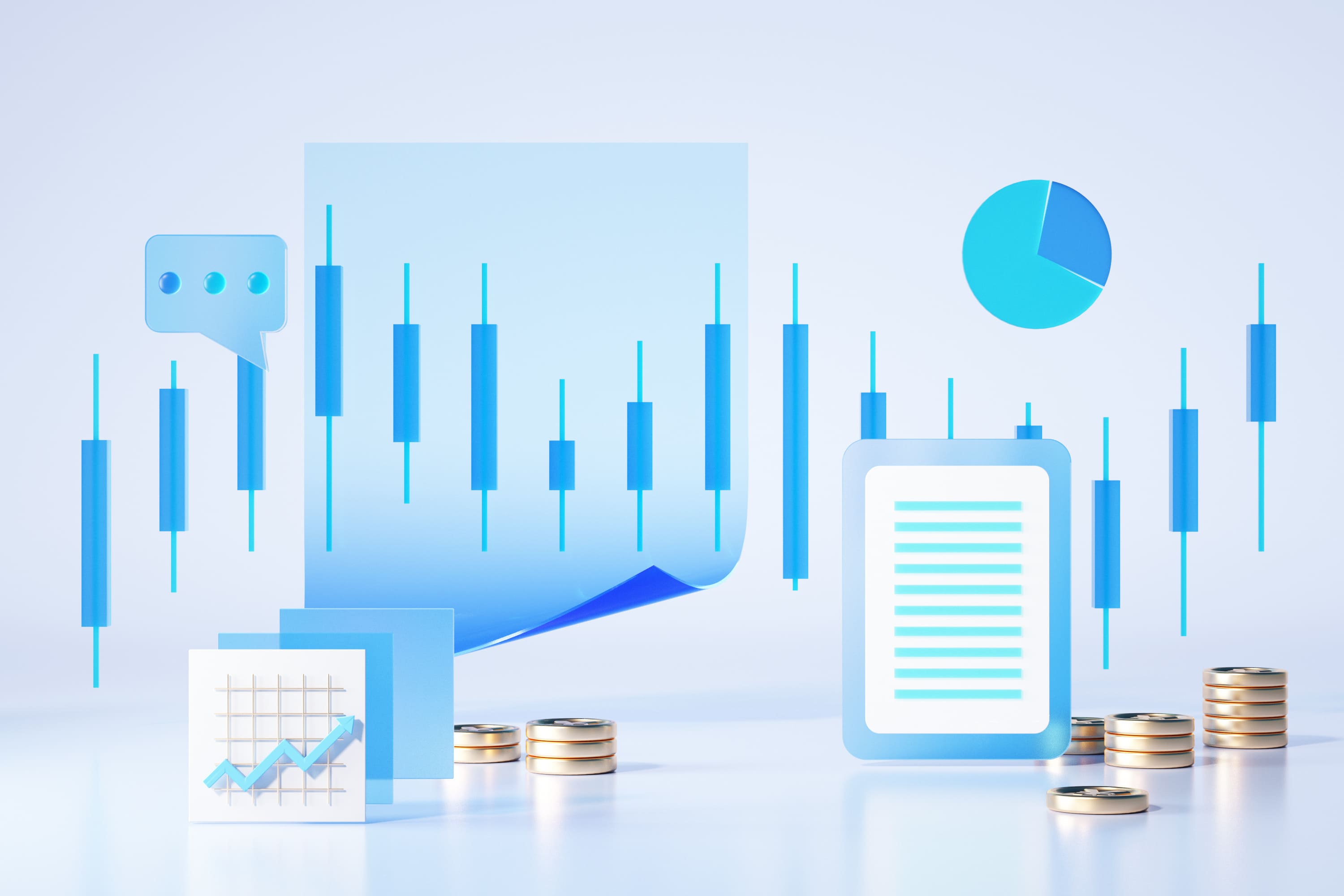
Ensuring Data Consistency Across Systems
Consistency in data management is vital for accurate reporting and analysis. A data integration hub guarantees that all connected systems access consistent, updated information, thereby eliminating the discrepancies that often occur when data is manually transferred or stored in disparate silos.
Improved Data Governance: By enforcing uniform standards across systems, the hub not only reduces errors but also bolsters data integrity.
Reduced Risks: Consistent data decreases the likelihood of errors that could negatively affect your business operations.
Through standardizing and orchestrating data, the hub ensures that every system communicates effectively, fostering trust in your data and supporting enhanced decision-making processes.
Enabling Real-Time Data Sharing and Synchronization
Real-time data sharing transforms how organizations interact with information. The data integration hub facilitates instantaneous updates across systems, ensuring all stakeholders have access to the most current data. This is particularly crucial for operations where time sensitivity is key, as any delay could result in missed opportunities.
Real-time synchronization boosts operational efficiency by minimizing delays in data access, enabling teams to respond swiftly based on fresh insights.
Real-time synchronization enhances operational efficiency by reducing lag times in data access. It empowers teams to act on insights without delay.
Achieved through advanced tools such as APIs and ETL/ELT processes, the hub allows for seamless data flow and synchronization across multiple platforms with minimal latency. Whether managing customer interactions or analyzing market trends, real-time data access ensures you remain proactive and ahead of the curve.

How Does a Data Integration Hub Work?
Understanding the operations of a data integration hub illuminates its pivotal role in streamlining complex data processes. Serving as a central mechanism, it ensures seamless data flow, transformation, and synchronization across diverse systems. Let's delve into the key aspects of its functionality.
Overview of the Data Flow Process
The process within a data integration hub initiates with data extraction. The hub pulls data from various sources, including databases, applications, or cloud platforms. Once extracted, the data is transformed to ensure compatibility and usability before being distributed to target systems or applications.
This streamlined method eliminates the need for direct connections between individual systems, with the hub acting as a mediator. This setup ensures efficient and consistent data exchange, centralizing operations to minimize errors, bolster data quality, and enhance overall productivity.
A meticulously designed data flow process ensures that organizations can access accurate and current information whenever it's needed.
A well-designed data flow process ensures that your organization can access accurate and up-to-date information whenever needed.
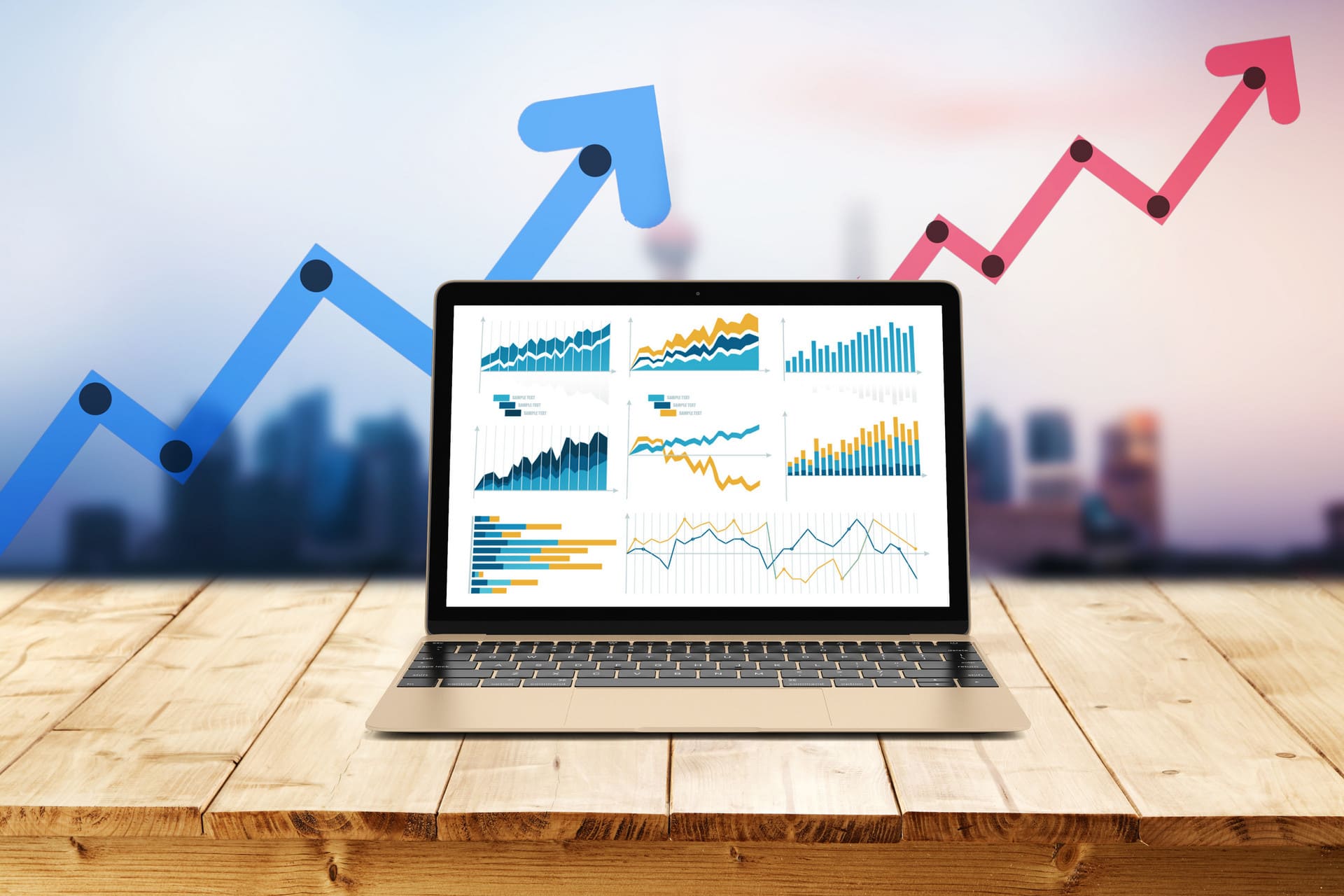
Role of APIs, Connectors, and ETL/ELT in Integration
APIs, connectors, and ETL/ELT tools form the backbone of a data integration hub. Each plays a unique role in facilitating seamless integration:
- APIs (Application Programming Interfaces): APIs enable communication between the hub and external systems. They allow you to retrieve, transfer, and update data in real time. This capability ensures flexibility and scalability, making APIs essential for modern integration technology.
- Connectors: Connectors act as bridges between the hub and various data sources or applications. They simplify the integration process by providing pre-built solutions for common platforms, reducing the need for custom development.
- ETL/ELT Tools: These tools handle the extraction, transformation, and loading of data. ETL focuses on processing data before loading it into a target system, while ELT performs transformations after loading. Both approaches ensure that your data is clean, consistent, and ready for analysis.
By leveraging these components, a data integration hub automates workflows, reduces manual effort, and enhances operational efficiency.
APIs and connectors ensure seamless communication, while ETL/ELT tools prepare your data for meaningful use.

Data Transformation and Standardization for Seamless Integration
Data transformation and standardization are critical for ensuring compatibility across systems. The hub converts data into a uniform format, eliminating inconsistencies that can arise from diverse data structures. This process involves:
- Data Cleaning: Removing duplicates, errors, or irrelevant information to improve data quality.
- Data Mapping: Aligning data fields from different sources to a common structure.
- Data Standardization: Applying consistent formats, units, and naming conventions.
These steps ensure that all connected systems can interpret and utilize the data effectively. Standardized data not only improves accuracy but also enhances decision-making by providing a reliable foundation for analysis.
Data transformation bridges the gap between disparate systems, enabling seamless integration and collaboration.
Benefits of Using a Data Integration Hub
Improved Data Accuracy and Consistency
Accurate and consistent data forms the backbone of effective decision-making. A data integration hub ensures that your data remains reliable by eliminating discrepancies caused by manual processes or siloed systems. It consolidates information from various sources into a single, unified platform. This approach reduces errors and ensures that every system accesses the same up-to-date data.
Consistent data builds trust within your organization and enhances the quality of your analytics.
By using a data integration hub, you can enforce uniform standards across all connected systems. This standardization minimizes the risk of errors and improves the overall integrity of your data. Whether you are generating reports or analyzing trends, you can rely on accurate information to guide your decisions.
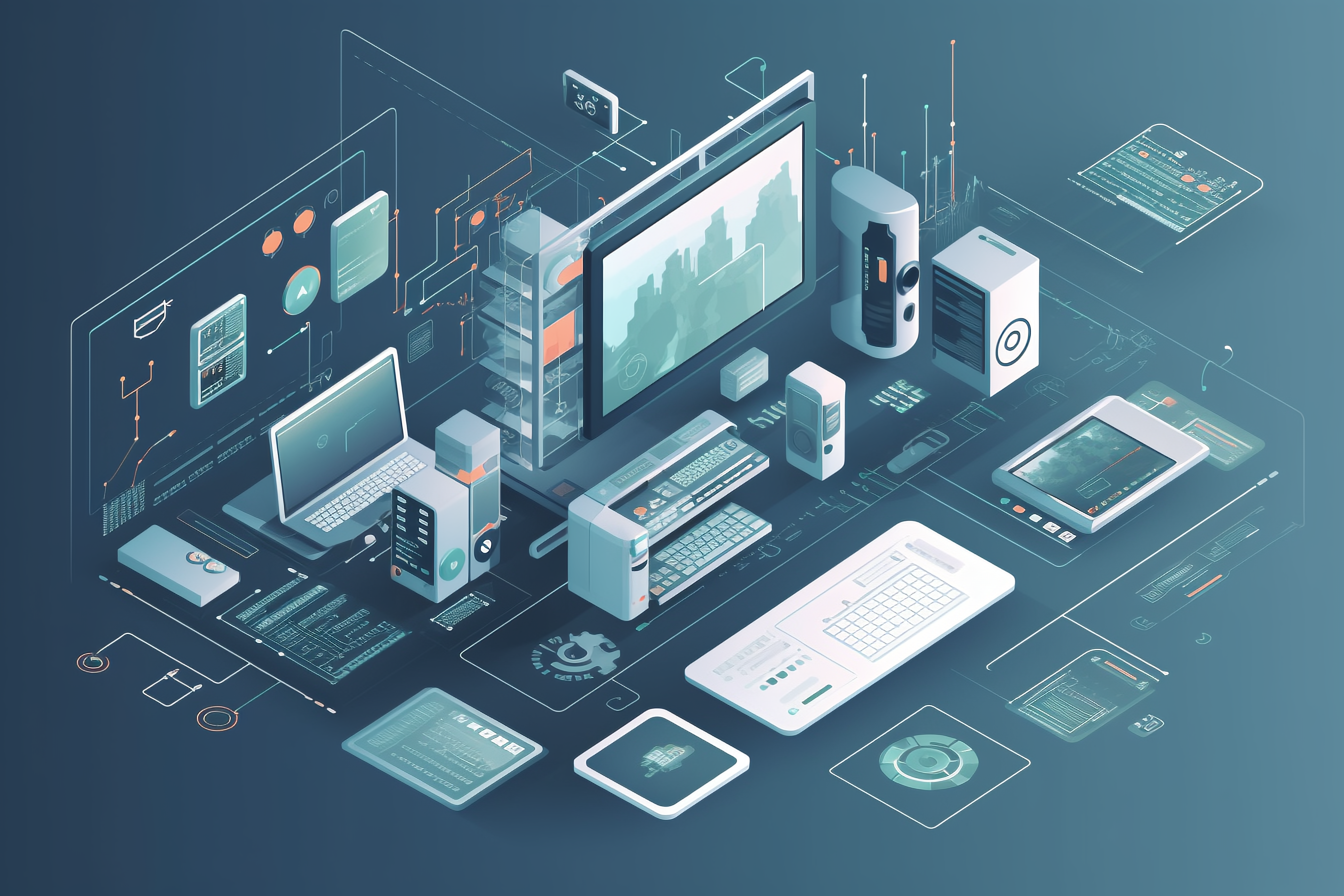
Enhanced Scalability for Growing Enterprises
As your organization grows, so does the complexity of managing data. A data integration hub provides the scalability you need to handle increasing data volumes and new data sources. Its centralized architecture allows you to integrate additional systems without disrupting existing workflows. This flexibility ensures that your data infrastructure evolves alongside your business.
Scalability is essential for maintaining efficiency as your enterprise expands.
The hub’s ability to adapt to growing demands makes it an ideal solution for enterprises of all sizes. You can seamlessly connect new applications, databases, or cloud platforms to the hub. This capability ensures that your data ecosystem remains efficient and future-proof, even as your organization scales.
Cost Savings Through Streamlined Operations
Streamlining operations reduces costs and improves productivity. A data integration hub simplifies complex data processes, eliminating the need for multiple point-to-point connections. This efficiency reduces the time and resources required for data management tasks. By automating workflows and minimizing manual intervention, the hub lowers operational expenses.
Streamlined operations free up resources, allowing you to focus on strategic initiatives.
The hub also reduces maintenance costs by centralizing data integration efforts. Instead of managing numerous individual connections, you can rely on a single platform to handle all data exchanges. This consolidation not only saves money but also enhances the overall efficiency of your operations.

Real-Time Data Synchronization for Informed Decision-Making
Real-time data synchronization empowers you to make decisions based on the most current and accurate information. It ensures that every system in your organization receives instant updates, eliminating delays that could hinder critical operations. This capability transforms how you interact with data, enabling faster responses and more informed strategies.
Real-time synchronization bridges the gap between data generation and utilization, giving you a competitive edge in dynamic environments.
With real-time synchronization, you can monitor changes as they happen. Whether tracking customer behavior, managing inventory, or analyzing market trends, you gain immediate insights. This immediacy allows you to act on opportunities or address challenges without hesitation.
Key Advantages of Real-Time Synchronization:
- Enhanced Operational Efficiency Real-time updates reduce the time spent waiting for data to propagate across systems. This efficiency streamlines workflows and minimizes downtime, keeping your operations running smoothly.
- Improved Decision Accuracy Access to up-to-date information ensures that your decisions are based on the latest data. This accuracy reduces risks and enhances the outcomes of your strategies.
- Faster Response Times Real-time synchronization enables you to respond quickly to changing conditions. Whether adjusting to market demands or resolving issues, you stay ahead of the curve.
- Seamless Collaboration Teams across departments can access the same updated data simultaneously. This consistency fosters better collaboration and alignment, ensuring everyone works toward shared goals.
How Real-Time Synchronization Works in a Data Integration Hub
A data integration hub achieves real-time synchronization through advanced tools and technologies. Data Integration facilitates instant communication between systems, while ETL/ELT processes ensure that data remains clean and usable.
By leveraging these tools, you create a seamless flow of information across your organization.
This synchronization process eliminates manual intervention, reducing errors and saving time. It also supports scalability, allowing your systems to handle increasing data volumes without compromising performance.

Real-World Applications of Real-Time Synchronization
- Customer Experience: Deliver personalized experiences by accessing real-time customer data. Tailor your interactions based on the latest preferences and behaviors.
- Supply Chain Management: Monitor inventory levels and logistics in real time. Optimize your supply chain to prevent shortages or overstocking.
- Financial Reporting: Generate accurate financial reports instantly. Make timely decisions that align with your business objectives.
Real-time data synchronization transforms your organization into a responsive and agile entity. By adopting this approach, you unlock the full potential of your data, driving success in an ever-changing landscape.
Practical Use Cases for a Data Integration Hub
Integrating Data Across Multiple Business Units
Managing data across various business units often feels overwhelming. A data integration hub simplifies this process by creating a unified platform for seamless data exchange. It ensures that every department, from marketing to finance, accesses the same accurate and up-to-date information.
For example, imagine your marketing team analyzing customer behavior while your sales team tracks purchase history. Without a centralized hub, these teams might rely on inconsistent or outdated data. A data integration hub eliminates this issue by synchronizing data in real time. This synchronization fosters collaboration and ensures that all teams work toward shared goals with reliable insights.
Key takeaway: A data integration hub bridges the gap between departments, enabling better communication and more informed decision-making.
Supporting Real-Time Analytics and Reporting
Real-time analytics transforms how you make decisions. A data integration hub empowers you to access live data, enabling faster and more accurate reporting. This capability proves invaluable in industries where timing is critical.
Consider a financial institution monitoring transactions. When a customer withdraws money from an ATM, the system updates their account balance instantly. This real-time synchronization prevents discrepancies and ensures accurate financial records. It also enhances fraud detection by providing up-to-the-minute data for analysis. With a data integration hub, you can act on insights immediately, giving your organization a competitive edge.
Real-world application: Retail companies use real-time analytics to manage inventory. When a customer purchases an item, the system updates stock levels instantly. This process reduces overstock and stockouts, improving customer satisfaction and operational efficiency.
Enabling Seamless Data Sharing in Mergers and Acquisitions
Mergers and acquisitions often involve integrating data from multiple systems. This process can be complex and time-consuming without the right tools. A data integration hub simplifies this challenge by providing a centralized platform for data sharing.

During a merger, you might need to combine customer databases, financial records, and operational data from two organizations. A data integration hub ensures that this information integrates smoothly, maintaining consistency and accuracy. It also supports real-time synchronization, allowing both entities to operate as a cohesive unit from day one.
Why it matters: Seamless data sharing accelerates the integration process, reducing downtime and ensuring business continuity during mergers and acquisitions.
By leveraging a data integration hub, you can streamline operations, enhance collaboration, and unlock the full potential of your organizational data. These practical use cases demonstrate its value across various industries and scenarios.
Enhancing Customer Experience Through Unified Data
Unified data transforms how you interact with your customers. By consolidating information from various sources, you gain a comprehensive view of customer behavior, preferences, and needs. This holistic perspective allows you to deliver personalized experiences that resonate with your audience.
"When customers feel understood, they are more likely to engage with your brand and remain loyal."
Personalizing Customer Interactions
Unified data enables you to tailor every interaction to meet individual customer expectations. For instance, imagine a retail company that synchronizes inventory data across multiple stores. When a customer purchases an item, the system updates stock levels instantly. This real-time synchronization ensures accurate availability information, allowing you to recommend alternative products or nearby stores if an item is out of stock.
Key Benefits of Personalization:
- Builds stronger customer relationships.
- Increases satisfaction by addressing specific needs.
- Encourages repeat purchases through tailored recommendations.
By leveraging unified data, you can create meaningful connections that enhance the overall customer journey.

Streamlining Customer Support
Unified data simplifies customer support processes. When your support team accesses a centralized platform, they can retrieve accurate and up-to-date customer information instantly. This efficiency reduces response times and improves issue resolution. For example, financial institutions use real-time data synchronization to update account balances across ATMs, online banking, and branch systems. If a customer reports a discrepancy, your team can quickly verify and resolve the issue using synchronized data.
"Fast and accurate support builds trust and strengthens customer loyalty."
With unified data, you empower your support team to deliver exceptional service that meets customer expectations.
Enhancing Customer Insights
Unified data provides valuable insights into customer behavior. By analyzing this data, you can identify trends, predict future needs, and make informed decisions. For instance, a retail company uses real-time data synchronization to monitor inventory levels. This process not only optimizes stock management but also reveals purchasing patterns. Understanding these patterns helps you anticipate demand and offer promotions that align with customer interests.
How Unified Data Enhances Insights:
- Combines data from multiple touchpoints for a complete view.
- Identifies trends and patterns in customer behavior.
- Supports data-driven strategies for improved engagement.
These insights enable you to stay ahead of customer expectations and deliver experiences that exceed their needs.
Building Long-Term Loyalty
Unified data fosters trust by ensuring consistency across all customer interactions. When customers receive accurate information and personalized experiences, they feel valued. This trust translates into long-term loyalty, which drives repeat business and positive word-of-mouth.
"Consistency is the foundation of customer loyalty."
By investing in a data integration hub, you create a unified data ecosystem that supports seamless, personalized, and efficient customer experiences. This approach not only enhances satisfaction but also positions your organization as a customer-centric leader in your industry.

FineDataLink: A Comprehensive Data Integration Hub Solution
How FineDataLink Simplifies Data Integration
FineDataLink transforms the way you handle data by offering a streamlined and efficient integration solution. It eliminates the challenges of managing scattered data sources and complex workflows. With its low-code platform, you can integrate data from multiple systems without extensive coding knowledge. This simplicity empowers your team to focus on comprehensive data integration and decision-making rather than technical hurdles.
The platform supports over 100 common data sources, enabling seamless connections between databases, applications, and cloud environments. For instance, in the healthcare sector, FineDataLink can unify patient records, insurance claims, and electronic health records (EHRs). This integration accelerates diagnoses and enhances patient care. Similarly, in e-commerce, it connects platforms with inventory management and CRM systems, ensuring real-time updates for efficient data integration.
FineDataLink also automates data workflows, reducing manual intervention. Its visual interface allows you to design data pipelines with drag-and-drop functionality. This feature simplifies tasks like database migration, data preprocessing, and real-time synchronization. By centralizing these processes, FineDataLink saves time and ensures data consistency across your organization.

Key Features of FineDataLink for Real-Time Data Synchronization
FineDataLink excels in real-time data synchronization, a critical feature for modern enterprises. It ensures that your systems receive instant updates, enabling you to make timely and informed decisions. This capability is particularly valuable in industries where delays can lead to missed opportunities or inefficiencies.
- Real-Time Data Pipelines: FineDataLink synchronizes data across multiple tables with minimal latency, often measured in milliseconds. This feature is ideal for applications like financial services, where real-time updates are crucial for loan approvals, investment strategies, and fraud detection.
- API Integration: The platform allows you to develop and deploy APIs within minutes, facilitating seamless data sharing between systems. For example, manufacturing companies can use APIs to connect production systems, supply chains, and quality control processes. This integration enhances production efficiency and ensures smooth operations.
- ETL/ELT Tools: FineDataLink supports both ETL (Extract, Transform, Load) and ELT (Extract, Load, Transform) processes. These tools prepare your data for analysis by cleaning, transforming, and standardizing it. Whether you're managing customer data or monitoring inventory, these tools ensure that your data is accurate and ready for use.
- Monitoring and Alerts: The platform includes robust monitoring features that track data pipelines in real time. It sends alerts for any anomalies, ensuring that your data remains reliable and secure.
These features make FineDataLink a powerful tool for achieving real-time synchronization, enhancing operational efficiency, and driving better business outcomes.
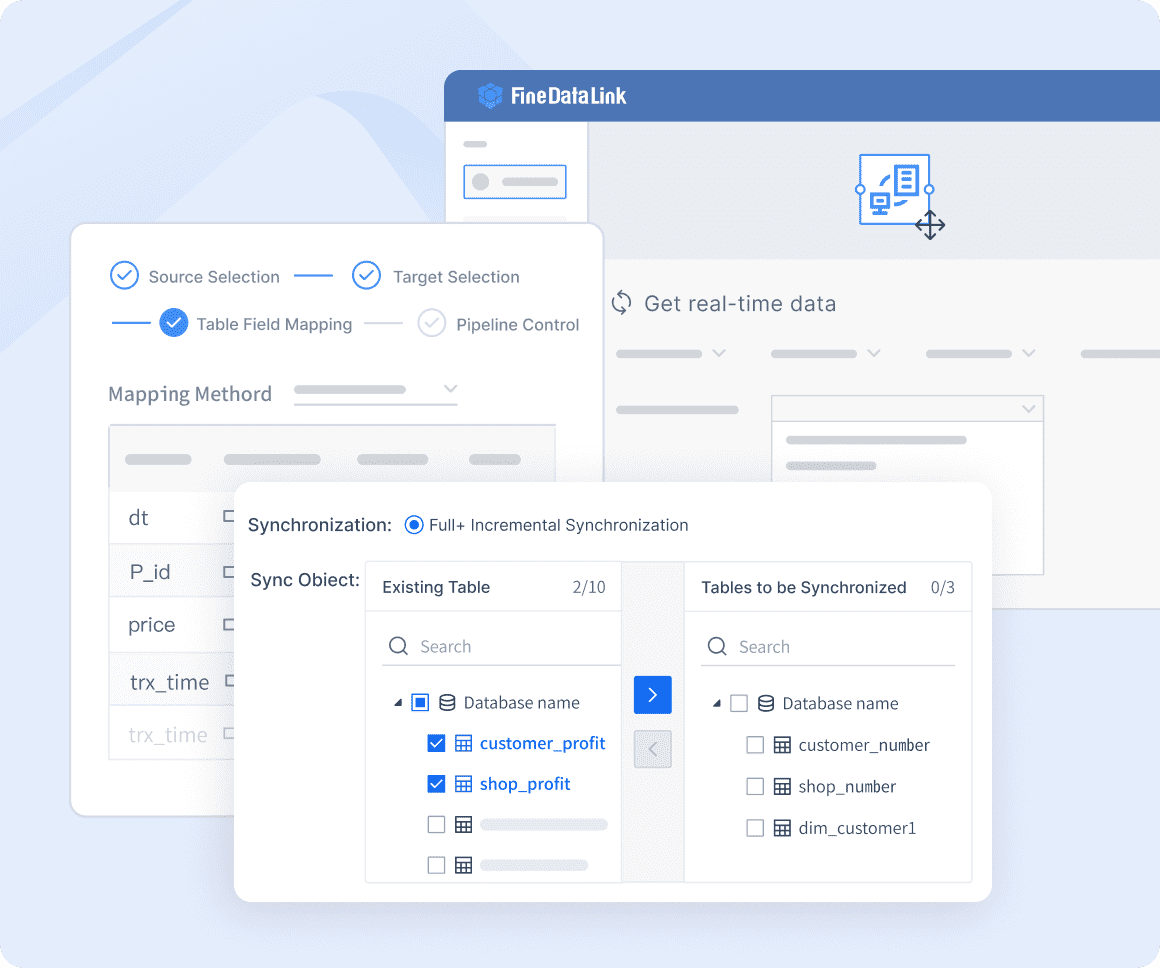
FineDataLink’s Role in Building Real-Time and Offline Data Warehouses
FineDataLink plays a pivotal role in constructing both real-time and offline data warehouses. These warehouses serve as centralized repositories for storing and analyzing data, enabling you to derive actionable insights.
- Real-Time Data Warehouses: FineDataLink supports the creation of real-time data warehouses by synchronizing data with minimal latency. This capability is essential for industries like retail, where real-time analytics can optimize inventory management and improve customer experiences. For example, when a customer purchases an item, the system updates stock levels instantly, ensuring accurate availability information.
- Offline Data Warehouses: The platform also facilitates the development of offline data warehouses for historical analysis. Its ETL/ELT tools allow you to preprocess and transform data before storing it. This approach is valuable for long-term trend analysis and strategic planning. In the financial sector, for instance, offline data warehouses help organizations analyze past transactions to identify patterns and improve decision-making.
FineDataLink's ability to handle both real-time and offline data needs makes it a versatile solution for businesses aiming to enhance their data infrastructure. By leveraging this platform, you can build robust data warehouses that support both immediate and long-term objectives.
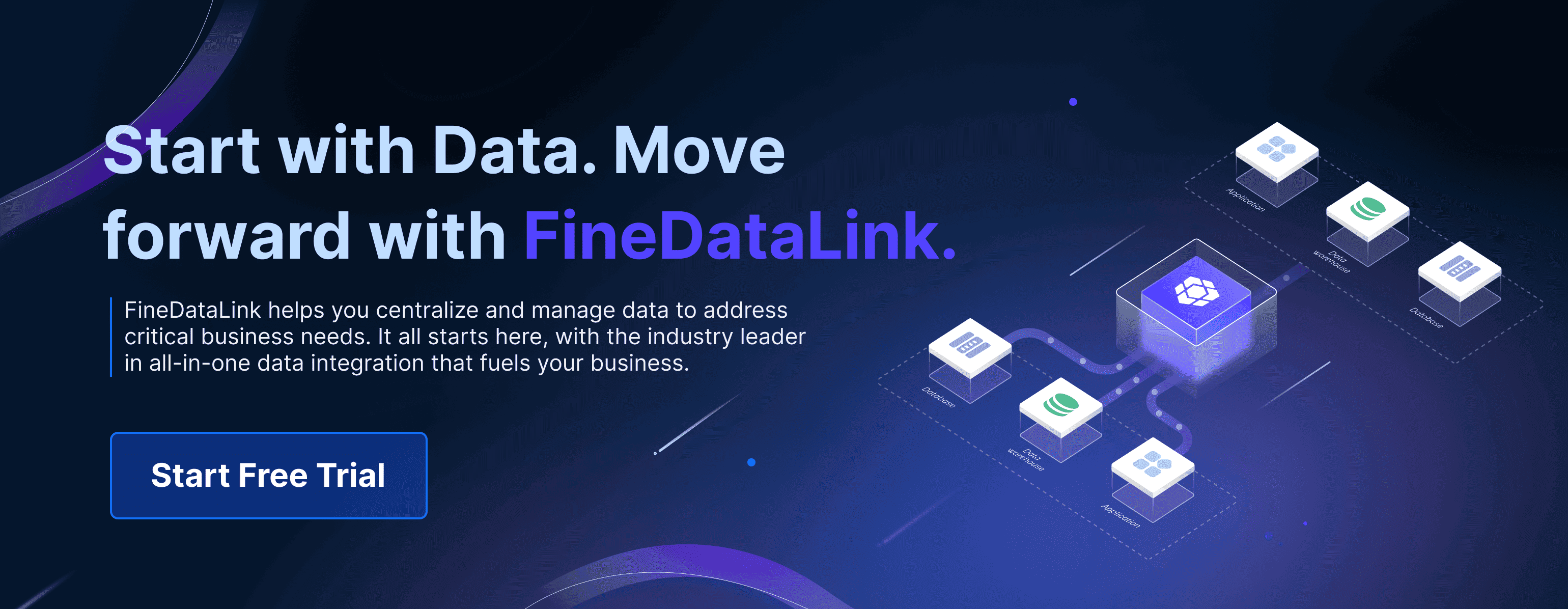
Is a Data Integration Hub Right for Your Organization?
Determining whether a data integration hub aligns with your organizational needs requires careful evaluation. By asking the right questions and understanding common scenarios, you can make an informed decision. FineDataLink offers solutions that address typical challenges, making it a valuable choice for enterprises.
Questions to Ask Before Implementing a Data Integration Hub
Before adopting a data integration hub, consider these critical questions:
- What are your current data challenges? Identify issues like data silos, inconsistent formats, or manual processes. Understanding these pain points helps you assess how a hub can resolve them.
- Do you need real-time data synchronization? Evaluate whether your operations require instant updates. Real-time synchronization is essential for industries like retail, where inventory levels and customer interactions change rapidly.
- How scalable is your current data infrastructure? Consider whether your existing systems can handle growing data volumes. A hub provides scalability, ensuring your infrastructure evolves with your business.
- What level of automation do you need? Determine if automating workflows and reducing manual intervention will improve efficiency. Automation minimizes errors and accelerates processes.
- Are your systems compatible with integration services? Assess whether your current platforms support APIs, connectors, or ETL/ELT tools. Compatibility ensures seamless integration and maximizes the hub’s potential.
Key takeaway: Answering these questions clarifies your organization’s readiness for a data integration hub and highlights areas where it can add value.
Common Scenarios Where a Data Integration Hub is Beneficial
A data integration hub proves invaluable in various scenarios. Here are some examples where it can transform operations:
A data integration hub proves invaluable in various scenarios. Here are some examples where it can transform operations: - Data Integration hub centralizes this information, creating a unified source of truth. Companies often struggle with data stored across multiple platforms. A hub centralizes this information, creating a unified source of truth. For instance, an e-commerce company can consolidate customer data from its website, CRM, and marketing tools. This integration enables personalized shopping experiences and optimized marketing strategies.
- Enterprises requiring real-time updates Real-time synchronization is crucial for industries like financial services and healthcare. A hub ensures instant updates, improving decision-making and operational efficiency. For example, a financial institution can monitor transactions in real time, enhancing fraud detection and customer satisfaction.
- Businesses undergoing mergers or acquisitions Merging data from different systems can be complex. A hub simplifies this process by providing a centralized platform for integration. During a merger, it ensures consistent and accurate data sharing, reducing downtime and maintaining business continuity.
- Retailers aiming to enhance customer experiences Unified data allows retailers to deliver personalized interactions. By synchronizing inventory and customer data, a hub ensures accurate availability information and tailored recommendations. This approach improves customer loyalty and satisfaction.
Real-world insight: Centralized data hubs have proven effective in industries like retail, healthcare, and financial services, where seamless integration and real-time updates are critical.
How FineDataLink Addresses Common Data Integration Challenges
FineDataLink stands out as a comprehensive solution for overcoming data integration challenges. Its features cater to the needs of modern enterprises, ensuring efficient and reliable integration management.
- Eliminating data silos FineDataLink centralizes data from multiple sources, breaking down silos. This capability creates a cohesive data ecosystem, enabling better collaboration and decision-making.
- Simplifying complex data formats The platform supports over 100 data sources, ensuring compatibility across diverse formats. Its ETL/ELT tools standardize and transform data, making it usable across systems.
- Automating workflows FineDataLink reduces manual intervention with its visual interface and drag-and-drop functionality. Automation streamlines processes, saving time and minimizing errors.
- Ensuring scalability The platform adapts to growing data needs, supporting enterprises as they expand. Its robust architecture handles large volumes of data without compromising performance.
- Providing real-time synchronization FineDataLink excels in real-time data updates, ensuring instant communication between systems. This feature is vital for industries requiring immediate insights and actions.
Why choose FineDataLink? Its ability to address common challenges makes it an ideal enterprise integration hub for organizations seeking efficient and scalable solutions.
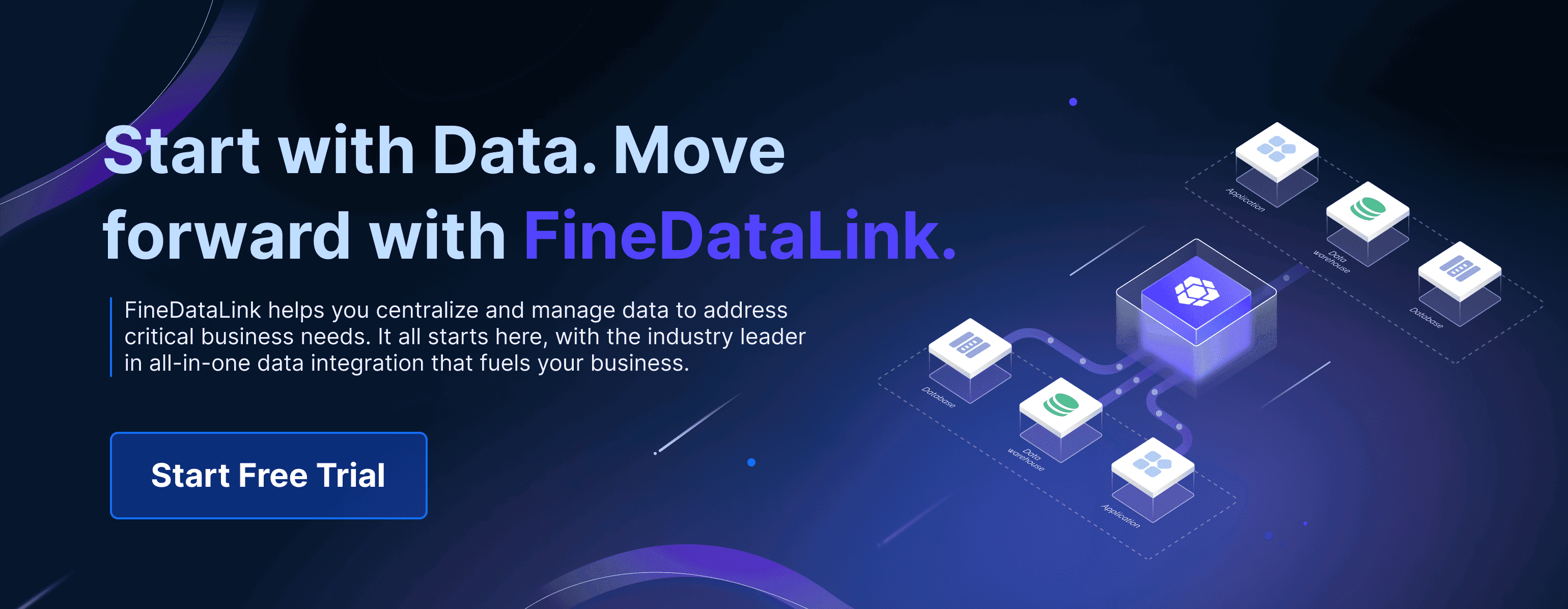
Key Features to Look for in a Data Integration Hub
Scalability and Flexibility for Enterprise Needs
Scalability ensures that your data integration hub grows with your organization. As your business expands, the volume of data and the number of systems you manage will increase. A robust hub adapts to these changes without compromising performance. It allows you to integrate new systems, applications, or databases seamlessly. This flexibility ensures that your operations remain efficient, even as your data ecosystem becomes more complex.
Tools like Raysync demonstrate how automatic synchronization supports real-time updates, keeping your systems aligned as your data integration hub evolves.
Scalability and flexibility are essential for maintaining operational efficiency in dynamic environments.
When evaluating a hub, prioritize solutions that offer modular architecture. This design allows you to add or remove components based on your needs. A scalable hub not only supports your current requirements but also prepares your organization for future challenges.
Security and Compliance Capabilities
Data security is a critical consideration when selecting a data integration hub. Your hub must protect sensitive information from unauthorized access and breaches. It should include features like encryption, access controls, and activity monitoring. These measures ensure that your data remains secure throughout the integration process.
Compliance with industry regulations is equally important. Whether you operate in healthcare, finance, or retail, your hub must adhere to standards like GDPR, HIPAA, or PCI DSS. A compliant hub reduces the risk of penalties and builds trust with your stakeholders.
A secure and compliant hub safeguards your data while ensuring adherence to legal and industry standards.
Look for hubs that provide detailed audit trails. These records track all data interactions, helping you identify and address potential vulnerabilities. Additionally, choose a solution that offers regular updates to stay ahead of emerging security threats. By prioritizing security and compliance, you protect your organization and its reputation.

Ease of Integration with Existing Systems
A data integration hub should simplify the process of connecting your existing systems. Compatibility with diverse platforms, databases, and applications is crucial. The hub must support various integration services, including APIs, connectors, and ETL/ELT tools. These features enable seamless communication between your systems, ensuring efficient data access.
For instance, a manufacturing company can use a hub to integrate production systems with supply chain management tools. This integration streamlines operations and enhances decision-making. Solutions like Raysync highlight the importance of real-time collaboration, which improves overall efficiency.
Ease of integration reduces complexity and accelerates the implementation process.
When assessing a hub, consider its user interface. A visual, drag-and-drop interface simplifies the setup process, even for non-technical users. Additionally, ensure that the hub provides comprehensive documentation and support. These resources help your team maximize the hub’s potential and achieve your integration goals.
Support for Real-Time Data Processing and APIs
Real-time data processing has become essential for organizations aiming to stay competitive in fast-paced environments. A data integration hub with robust real-time capabilities ensures that your systems receive instant updates, enabling you to make timely and informed decisions. APIs (Application Programming Interfaces) further enhance this functionality by facilitating seamless communication between systems, applications, and platforms.

Why Real-Time Data Processing Matters
Real-time data processing allows you to act on information as it becomes available. This capability is critical for industries like finance, healthcare, and retail, where delays can lead to missed opportunities or operational inefficiencies. For example:
- Financial Services: Monitor transactions instantly to detect fraud or approve loans without delay.
- Healthcare: Access up-to-date patient records to improve diagnoses and treatment plans.
- Retail: Update inventory levels in real time to prevent stockouts or overstocking.
"Real-time data processing bridges the gap between data generation and utilization, empowering you to respond quickly to changing conditions."
By integrating real-time data processing into your operations, you can enhance efficiency, improve decision-making, and gain a competitive edge.
The Role of APIs in Modern Integration
APIs serve as the backbone of modern data integration. They enable different systems to communicate and share data effortlessly. With APIs, you can connect diverse platforms, automate workflows, and ensure data consistency across your organization. Key benefits of APIs include:
- Flexibility: APIs allow you to integrate new systems without disrupting existing workflows.
- Scalability: Easily expand your data ecosystem by connecting additional applications or databases.
- Efficiency: Automate repetitive tasks, reducing manual effort and minimizing errors.
For instance, Raysync supports automatic synchronization through APIs, ensuring that data remains aligned between systems. This feature enhances collaboration and operational efficiency by providing real-time updates.

How Real-Time Data Processing and APIs Work Together
When combined, real-time data processing and APIs create a powerful integration framework. Here’s how they work together:
- Data Collection: APIs retrieve data from various sources, such as databases, applications, or cloud platforms.
- Real-Time Updates: The integration hub processes this data instantly, ensuring that all connected systems receive up-to-date information.
- Data Distribution: APIs distribute the processed data to target systems, enabling seamless communication and synchronization.
This synergy eliminates delays, enhances data accuracy, and supports informed decision-making. Whether you’re managing customer interactions, monitoring supply chains, or analyzing market trends, this integration framework keeps your operations running smoothly.
Real-World Applications of Real-Time APIs
Organizations across industries leverage real-time APIs to streamline their operations. Examples include:
- E-Commerce: Synchronize inventory data across multiple sales channels to provide accurate product availability information.
- Manufacturing: Connect production systems with supply chain tools to optimize workflows and reduce downtime.
- Logistics: Track shipments in real time to improve delivery accuracy and customer satisfaction.
By adopting a data integration hub with real-time processing and API support, you can unlock new opportunities for growth and innovation. These capabilities not only enhance operational efficiency but also position your organization as a leader in your industry.

The Role of Digital Integration Hubs in Modern Enterprises
Decoupling Digital Applications from Back-End Systems
A digital integration hub revolutionizes how you manage your applications and systems. It separates digital applications from back-end systems, creating a more agile and efficient architecture. This decoupling allows your applications to function independently, reducing the strain on back-end systems and improving overall performance.
By leveraging this approach, you can ensure that your digital applications remain responsive, even during high-demand periods. For example, in e-commerce, a digital integration hub enables your website to handle a surge in customer traffic without overloading inventory or payment systems. This separation ensures seamless user experiences while maintaining the integrity of your back-end operations.
Key takeaway: Decoupling enhances system reliability and scalability, enabling your organization to adapt quickly to changing demands.
Enhancing Flexibility and Responsiveness in Data Access
Flexibility in data access is essential for modern enterprises. A digital integration hub provides a centralized platform that simplifies how you retrieve and share information. This architecture ensures that your teams can access the data they need, when they need it, without delays or complications.
With a digital integration hub, you can streamline workflows and improve decision-making. For instance, your marketing team can analyze customer behavior in real time, while your sales team accesses up-to-date purchase histories. This responsiveness empowers your organization to act swiftly and stay ahead of competitors.
Benefits of enhanced data access:
- Faster decision-making with real-time insights.
- Improved collaboration across departments.
- Reduced operational bottlenecks.
By centralizing data access, you eliminate the inefficiencies of scattered systems. This approach not only saves time but also enhances the accuracy and reliability of your data.
Pro tip: Use a digital integration hub to unify your data sources and create a single source of truth for your organization.
FineDataLink’s Contribution to Digital Integration Hub Architecture
FineDataLink stands out as a comprehensive solution for building a robust digital integration hub. Its advanced features simplify data integration and enhance operational efficiency. With FineDataLink, you can synchronize data in real time, automate workflows, and ensure seamless communication between systems.
The platform supports over 100 data sources, making it ideal for enterprises with diverse data needs. Its low-code interface allows you to design and deploy integration pipelines quickly, reducing the time and effort required for implementation. Whether you’re managing customer data, inventory, or financial records, FineDataLink ensures that your systems remain connected and up-to-date.
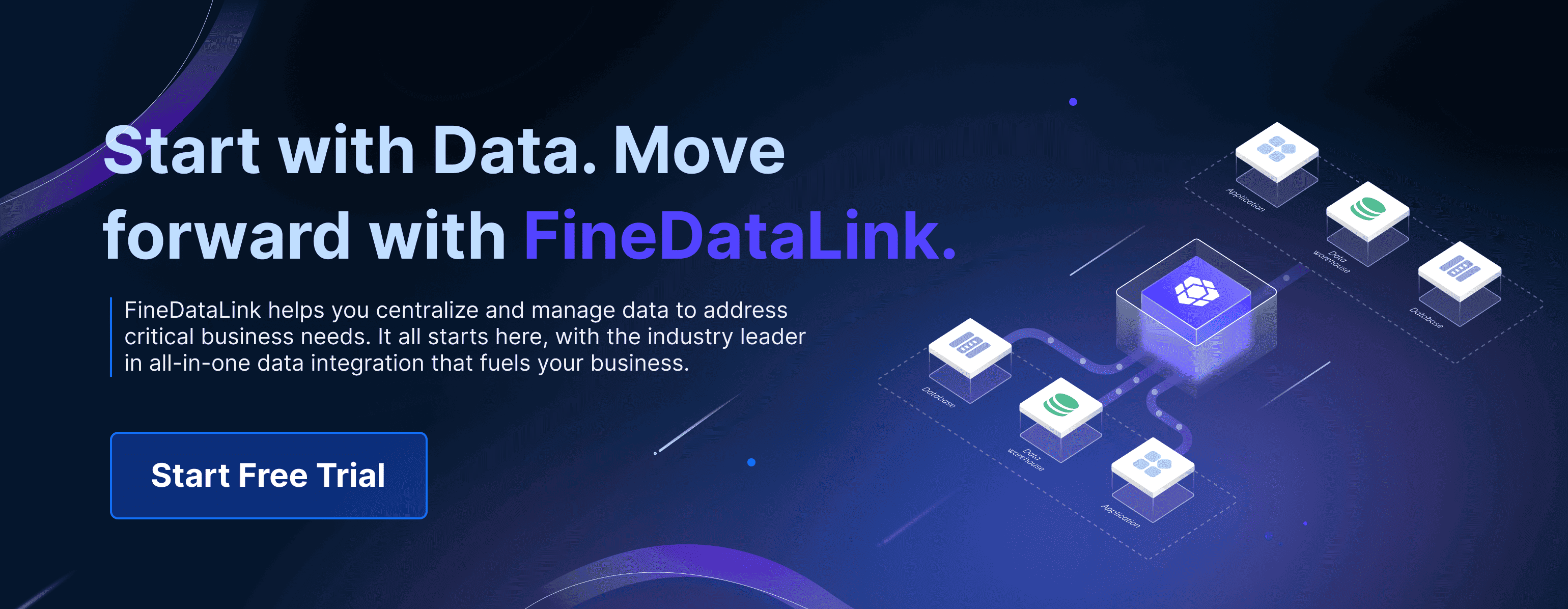
Key features of FineDataLink:
- Real-time data synchronization for instant updates.
- API integration for seamless communication between applications.
- ETL/ELT tools for efficient data transformation and standardization.
- Monitoring and alerts to ensure data quality and security.
FineDataLink’s contribution to digital integration hub architecture goes beyond technical capabilities. It empowers your organization to adapt to evolving data demands, ensuring that your systems remain scalable and future-proof.
Why choose FineDataLink? Its ability to centralize and streamline data processes makes it an invaluable tool for modern enterprises.
Future Trends in Data Integration Hubs
Increasing Use of AI and Machine Learning in Data Integration
Artificial Intelligence (AI) and Machine Learning (ML) are transforming how you approach data integration. These technologies automate complex tasks, such as data mapping and anomaly detection, which traditionally required significant manual effort. By leveraging AI, you can identify patterns in your data and predict future trends with greater accuracy.
For example, AI-powered tools can analyze large datasets to detect inconsistencies or errors. This ensures that your data remains clean and reliable. ML algorithms, on the other hand, continuously learn from your data processes, improving their efficiency over time. These advancements reduce the time spent on repetitive tasks and allow you to focus on strategic decision-making.
"A data hub architecture can be a powerful tool for organizations looking to effectively manage and leverage their data," as noted by a data integration expert. AI and ML enhance this architecture by making it smarter and more adaptive to your needs.
Incorporating AI and ML into your digital integration hub enables real-time insights and faster responses to changing business conditions. These technologies not only streamline operations but also position your organization to stay ahead in a competitive landscape.
Growing Importance of Cloud-Based Integration Hubs
The shift toward cloud-based solutions has made the cloud integration hub a critical component for modern enterprises.
Cloud integration hubs eliminate the need for extensive hardware investments. Instead, they provide a subscription-based model that adapts to your organization's growth. This scalability ensures that your data infrastructure evolves alongside your business. Additionally, cloud-based hubs support remote access, enabling your teams to collaborate seamlessly from anywhere.
"A Data Hub is innovative architecture that streamlines data integration," according to a data integration expert. Cloud-based hubs take this innovation further by offering centralized data management with enhanced accessibility.
By adopting a cloud integration hub, you can ensure real-time data synchronization across your systems. This capability enhances operational efficiency and supports informed decision-making. Whether you're managing customer data or analyzing market trends, cloud-based solutions provide the agility you need to succeed.

Focus on Data Governance and Compliance in Integration Solutions
Data governance and compliance have become top priorities for organizations handling sensitive information. A robust data integration hub must include features that ensure your data complies with industry regulations and internal policies. These features protect your organization from legal risks and build trust with your stakeholders.
Effective data governance involves maintaining data quality, security, and consistency. Integration hubs achieve this by enforcing standardized processes and providing detailed audit trails. These measures help you monitor data usage and identify potential vulnerabilities. Compliance with regulations like GDPR or HIPAA becomes seamless when your hub includes built-in safeguards.
Centralized data management, as highlighted by experts, provides a reliable and accurate single source of truth. This reliability is essential for meeting compliance requirements and ensuring data integrity.
Investing in a digital integration hub with strong governance capabilities allows you to manage your data responsibly. It also enhances your organization's reputation by demonstrating a commitment to ethical data practices. As regulatory landscapes evolve, having a compliant integration solution ensures that your business remains prepared for future challenges.
A data integration hub transforms how you manage and utilize data in your organization. It simplifies complex processes, ensuring seamless data flow and real-time synchronization. By centralizing data, it enhances accessibility, consistency, and decision-making. The practical applications, from improving customer experiences to streamlining operations, demonstrate its value across industries. FineDataLink by FanRuan offers a comprehensive solution tailored to modern data challenges. Its advanced features and user-friendly design make it an ideal choice for businesses. Explore FineDataLink today to unlock the full potential of your data.

Key Takeaways
Key Takeaway - A data integration hub centralizes data management, simplifying access and enhancing decision-making by providing a single source of truth.
- Real-time data synchronization enhances operational efficiency, allowing swift responses to changes.
- Data integration hubs streamline processes and reduce costs, supported by APIs and ETL/ELT tools for effective data management.
- FineDataLink provides a user-friendly, low-code platform for efficient data integration, improving customer experiences through personalized interactions.
Click the banner below to try FineDataLink for free and empower your enterprise to transform data into productivity!
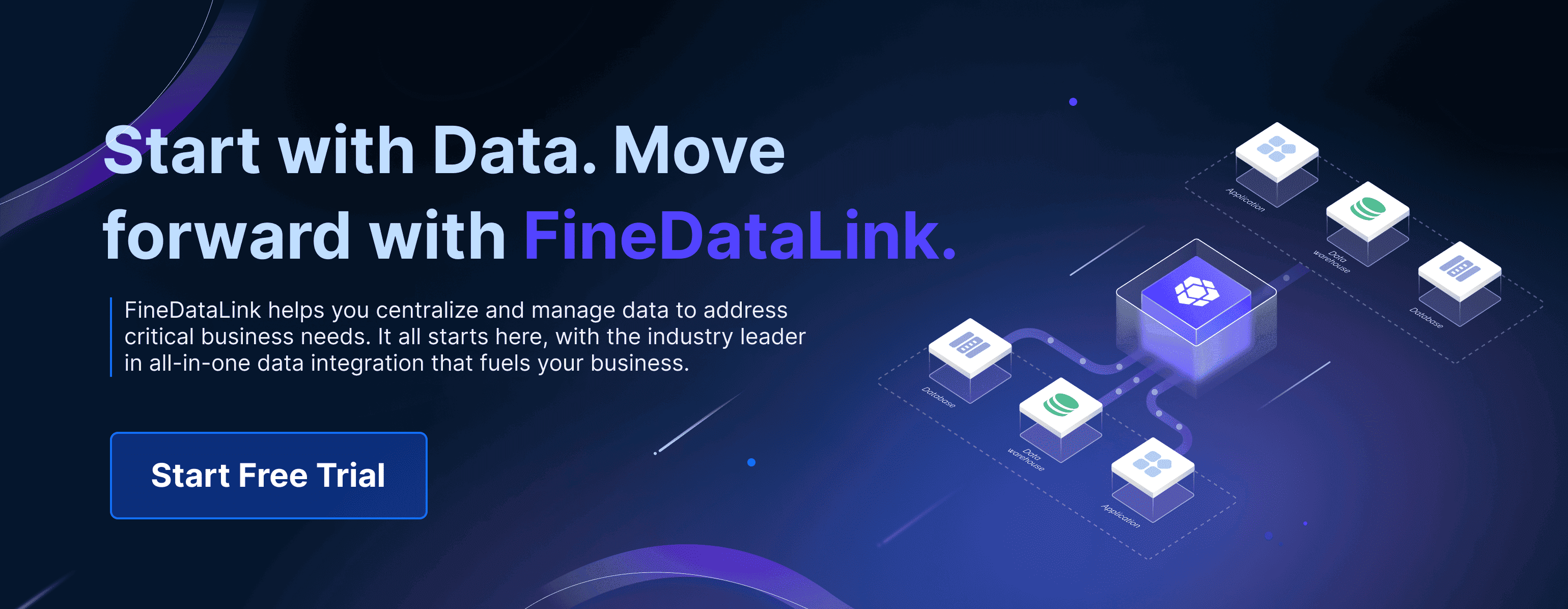
Continue Reading about Data Integration
Essential Data Integration: A Beginner's Guide
Top Data Integration Tools: 2025 Guide
Top 10 Data Integration Software for 2025
What is API Data Integration? API vs Data Integration
Best Data Integration Platforms to Use in 2025
Enterprise Data Integration: A Comprehensive Guide
Top 7 Data Integration Patterns for Modern Enterprises
FAQ

The Author
Howard
Data Management Engineer & Data Research Expert at FanRuan
Related Articles

10 Best Data Orchestration Tools for 2025 You Should Know
Compare the best data orchestration tools for 2025 to streamline workflows, boost automation, and improve data integration for your business.
Howard
Nov 28, 2025

10 Best Enterprise ETL Tools for Data Integration
Compare the 10 best enterprise ETL tools for data integration in 2025 to streamline workflows, boost analytics, and support scalable business growth.
Howard
Oct 02, 2025

What is Real Time Data Integration and Why It Matters
Real time data integration connects systems for instant, accurate data access, enabling faster decisions, improved efficiency, and better customer experiences.
Howard
Sep 24, 2025



